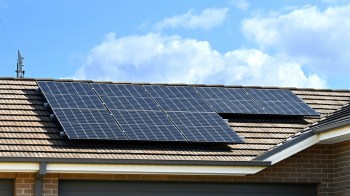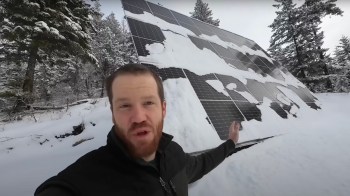Researchers at Lehigh University have developed a solar panel that is nearly twice as efficient as most existing solar panels, using something called "quantum material."
External quantum efficiency (EQE) is a mathematical calculation that measures the maximum efficiency of a solar device.
As detailed by Interesting Engineering, the maximum EQE of a traditional silicon-based solar cell is 100%. The cell developed by the Lehigh University researchers has an EQE of 190%.
"This work represents a significant leap forward in our understanding and development of sustainable energy solutions. Highlighting innovative approaches that could redefine solar energy efficiency and accessibility in the near future," said Chinedu Ekuma, the Lehigh University physics professor who led the research, in a news release.
The researchers published their work in the journal Science Advances in an article titled "Chemically tuned intermediate band states in atomically thin CuxGeSe/SnS quantum material for photovoltaic applications."
To achieve this remarkable success, Professor Ekuma and the team inserted atoms of a zerovalent copper into atomically small gaps in the quantum material, which they used as the active layer in the solar cell.
Save $10,000 on solar panels without even sharing your phone number Want to go solar but not sure who to trust? EnergySage has your back with free and transparent quotes from fully vetted providers that can help you save as much as $10k on installation. To get started, just answer a few questions about your home — no phone number required. Within a day or two, EnergySage will email you the best local options for your needs, and their expert advisers can help you compare quotes and pick a winner. |
While it may not have ever occurred to those of us who aren't physics professors to insert atoms of a zerovalent copper into atomically small gaps in a quantum material, we can all potentially reap the benefits of this research.
The more efficient solar technology becomes, the more it can replace dirty energy sources like gas and oil, which pollute our air and produce gases that contribute to our planet's overheating.
One of the biggest barriers for the solar energy industry is the amount of physical space solar panels take up, and doubling their efficiency — meaning you need to take up half as much space to produce the same amount of energy — could be a big step forward.
Professor Ekuma was clear that incorporating this discovery into existing solar energy systems will take more research and development, but he also said the technique is already highly advanced and precise.
TCD Picks » Upway Spotlight
💡Upway makes it easy to find discounts of up to 60% on premium e-bike brands
Join our free newsletter for weekly updates on the coolest innovations improving our lives and saving our planet.














